Recent Articles
Popular Makes
Body Types
2021 Toyota Highlander vs. 2021 Ford Explorer
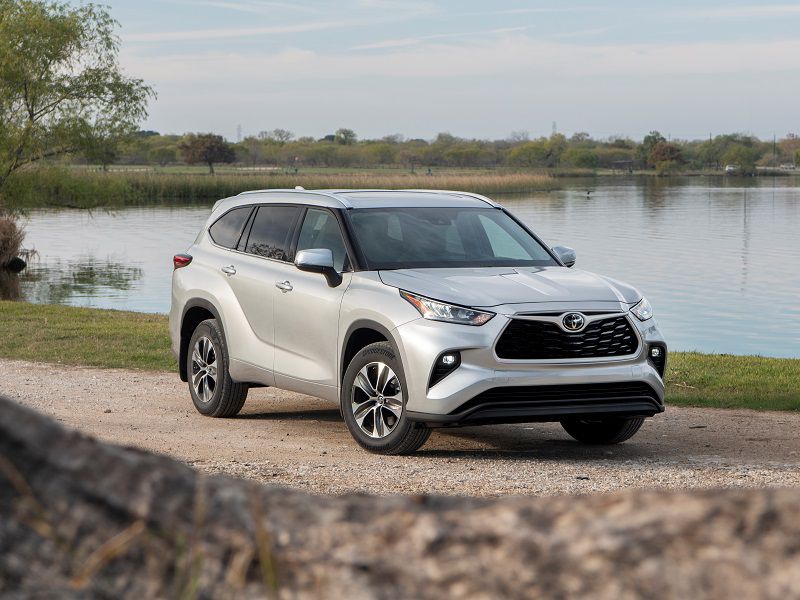
2020 Toyota Highlander XLE ・ Photo by Toyota
Two heavy-hitters in the mid-size three-row family SUV segment were completely redesigned for 2020: the Ford Explorer and the Toyota Highlander.
Neither are strangers to American driveways. But for this new generation, Ford switched the Explorer to a rear-drive platform shared with the Lincoln Aviator. Turbocharged power is standard in almost all versions, and a hybrid powertrain is available. Ford also sells performance-tuned ST and plush Platinum versions of its popular kid-hauler. Meanwhile, Toyota engineered the latest Highlander on its global vehicle platform, which promises improved driving dynamics. A familiar V6 engine returned, but the Highlander Hybrid got a new drivetrain estimated to get up to 36 mpg in combined driving. Five trim levels range from basic to luxurious. When it comes to the 2021 Toyota Highlander vs. 2021 Ford Explorer, which is best? That’s what we’re going to decide on the pages that follow.
Styling and Design
With the change to a rear-wheel-drive platform (with optional all-wheel-drive), the Ford Explorer’s proportions changed for the better. With short front overhangs and a fast, rakish rear end, it looks good. Unfortunately, some of the details are poorly resolved, like the relationship between the grille and headlights and the plain-Jane tailgate. Inside, the Explorer is quite appealing, especially in higher trim levels with their upscale materials and digital instrumentation. The available 10.1-inch touchscreen infotainment system, however, looks like your kid glued an iPad to the dashboard.
In contrast to the handsome Explorer, the Highlander resembles an overstuffed Toyota RAV4. Its bulldog looks, hockey stick side character lines, and swollen rear fenders are exaggerated almost to caricature. But in higher trim levels with larger 20-inch wheels, including the new-for-2021 XSE, the SUV’s appearance is more palatable. Typical Toyota functionality resides inside, and the handy dashboard tray from the old Highlander is present in the new suv. The housing for the infotainment and climate controls is just as bold as some of the exterior cues, though, looking like a shovel full of technology thrust into the Highlander from the right front door.
Ford Explorer
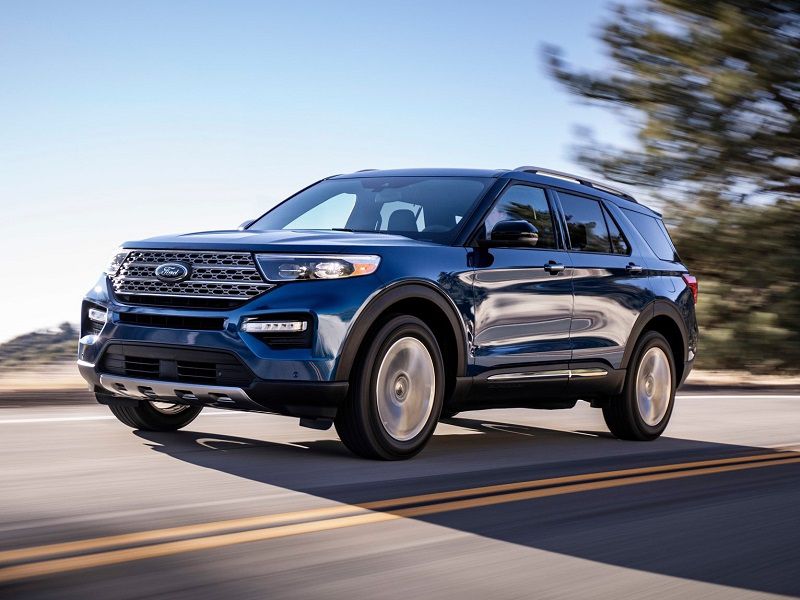
Photo by Ford
Comfort and Cargo
In its transformation, the Ford Explorer lost its relatively comfortable third-row seat. It still has one, but it’s for kids only. Also, note that unless you buy the base trim level, you’re gonna pay extra for a second-row bench seat. But hey, available heated, ventilated, and massaging front seats wrapped in premium leather await Mom and Dad in the fancy Explorer Platinum, so who cares?
Cargo space measures 47.9 cubic feet behind the Explorer’s second-row seat and maximum space amounts to 87.8 cubes. The Highlander supplies 48.4 cubic feet and a maximum of 84.3 cubes. Neither SUV offers much behind the third row, but if you must know, the Explorer has more. The Explorer’s third-row seat has more legroom, too, believe it or not. When Toyota says the Highlander can seat eight people, it means four adults and four kids. Little ones. At least a second-row bench seat is a no-cost option for the Highlander XLE and Limited. That’s good, because the nearly useless third-row is going to stay folded down almost all of the time.
Ford Explorer
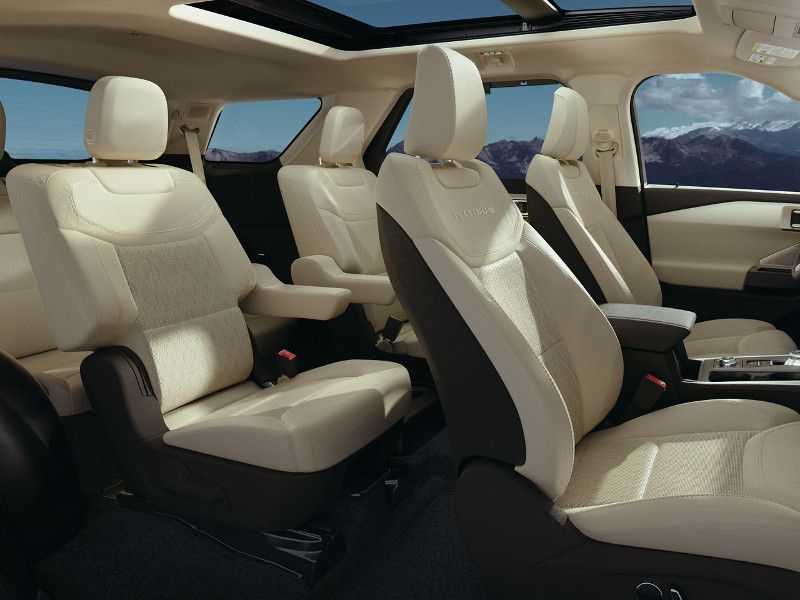
Photo by Ford
Infotainment System
Both of these SUVs offer infotainment systems with a minimum touchscreen size of 8 inches, Apple CarPlay, Android Auto, connected services with Wi-Fi, and wireless smartphone charging. Ford also equips the Explorer with Alexa and Waze integrations, and its FordPass Connect services plan is free for as long as you own the SUV. An outstanding 14-speaker premium sound system from high-end audio company Bang & Olufsen is highly recommended.
Where Ford trips up is with the available 10.1-inch touchscreen display. It’s mounted portrait-style and is poorly integrated with the Explorer’s overall interior design. Toyota does better here and goes bigger with a huge 12.3-inch display. And an available 11-speaker JBL sound system supplies an astounding 1,200 watts of power. Multiple connected-services plans are available for the Highlander, all with generous free trial periods but none free for as long as you own the vehicle — a big downside compared to the Explorer. Even the optional navigation system costs extra after three years.
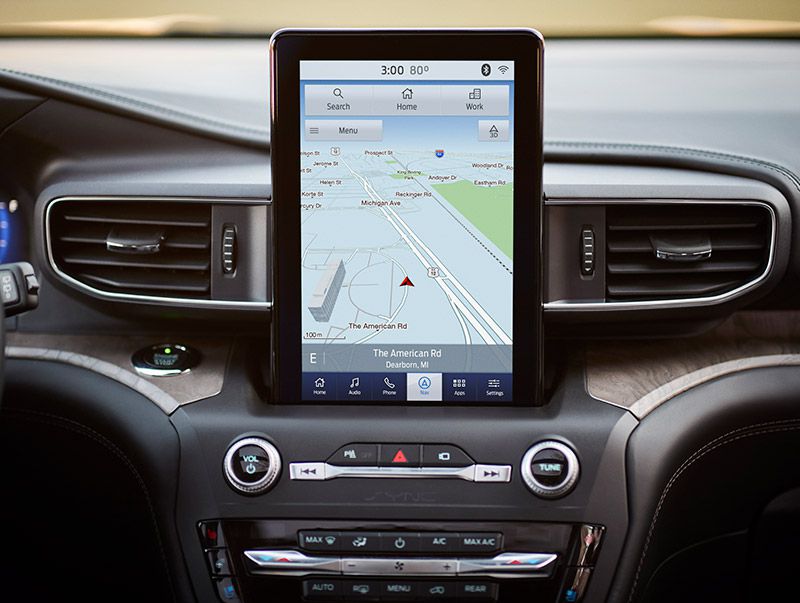
Photo by Ford
Safety and Technology
No doubt, Ford designed the new Explorer to excel in crash-safety tests, but it fails to earn a Top Safety Pick rating from the Insurance Institute for Highway Safety like the all-new Toyota Highlander does. Both of these SUVs include a comprehensive standard suite of advanced driving assistance systems. The Explorer has Ford Co-Pilot 360 with an optional Ford Co-Pilot 360 Assist+ upgrade available for most models. The Highlander offers Toyota Safety Sense 2.0 and a robust Safety Connect plan with a free year of service.
Ford Co-Pilot 360 includes blind-spot monitoring with a rear cross-traffic alert, which consumers find particularly useful. Plus, the blind-spot monitor includes trailer coverage. Explorers are also offered with standard post-collision braking and cross-wind stabilization, and optional evasive steering assist and fully autonomous parking assist. Technologically, the Explorer is more advanced — but without an IIHS Top Safety Pick rating, it cannot win.
Toyota Highlander

Photo by Toyota
Power and Performance
In the Explorer, a 2.3-liter turbocharged four-cylinder engine is standard, offering 300 horsepower. With ST and Platinum trim, a twin-turbo 3.0-liter V6 is under the hood, supplying up to 380 hp and a top speed of 143 mph. (Nope, not a typo.) The Explorer Hybrid uses a 3.3-liter V6 as its basis and it generates 318 total hp. Depending on the configuration, the Explorer tows up to 5,600 pounds. A 10-speed automatic is standard with each, powering the rear or all four wheels.
Toyota’s pony stable is comparatively dull. A 295-hp 3.5-liter V6 is standard unless you get the Highlander Hybrid, which is based on a 2.5-liter four-cylinder engine and whips up no more than 243 hp. The V6 uses an eight-speed automatic, while the Hybrid gets an electronic continuously variable transmission. Highlanders are front-wheel drive unless you get the optional AWD system. Towing capacity maxes out at 5,000 lbs for the V6 and 3,500 lbs for the Hybrid.
Ford Explorer
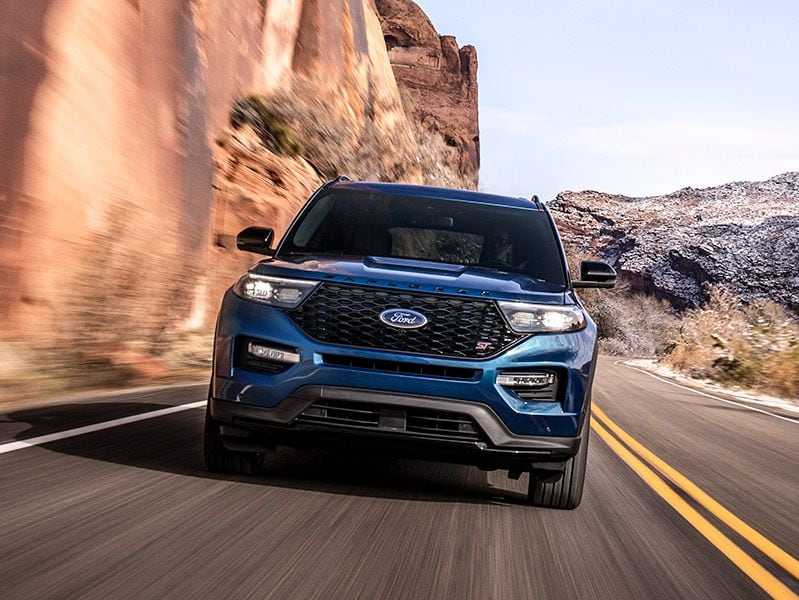
Photo by Ford
Fuel Economy
Based on EPA ratings, the Explorer’s standard turbocharge four-cylinder matches the Highlander’s V6 for fuel-efficiency. In combined driving, they’re rated to return 24 mpg without AWD and 23 mpg with it. Get the Explorer ST or Platinum, and the twin-turbo V6 should provide 20 mpg.
Turn your attention to the hybrids, and the Explorer’s more powerful powertrain gulps more gas. With rear-wheel drive, the rating is 28 mpg in combined driving. Add AWD, and it sinks to 25 mpg, just 2 mpg better than the standard turbo four. Meanwhile, the Highlander Hybrid’s powertrain is brilliant when it comes to saving money at the pump. Plus, it’s far more affordable than the Explorer Hybrid, which comes only with the pricey Limited trim and costs more than 50 grand. According to the EPA, the thrifty Highlander Hybrid gets 36 mpg with front-wheel drive and 35 mpg with electronic AWD.
Toyota Highlander
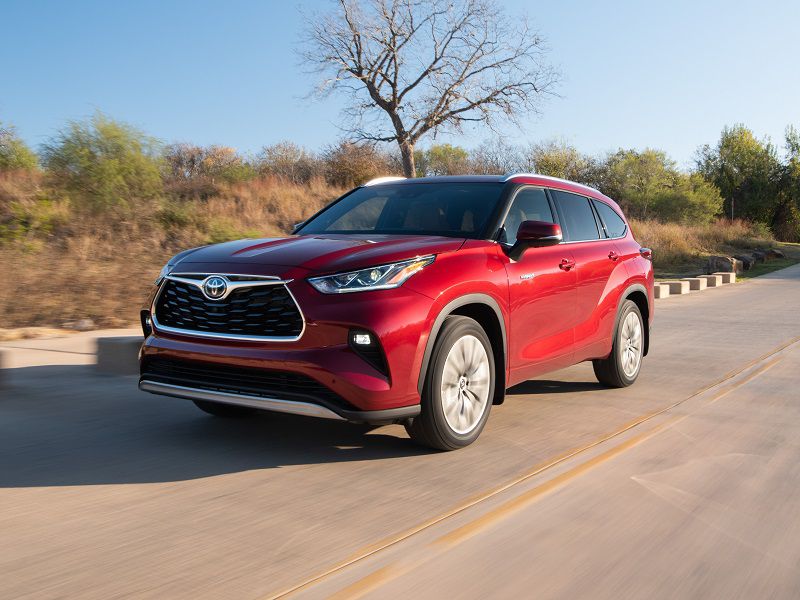
Photo by Toyota
Driving Dynamics
The Highlander Hybrid might be great on gas, but it’s not much fun to drive. It makes no better than adequate power. If you’re familiar with the previous V6-based Highlander Hybrid, you’ll be disappointed. Stick with the Highlander’s standard V6 engine, and you might be happier even if you’re traveling 12 fewer miles on every gallon of gas. This is a terrific powerplant, but the eight-speed automatic transmission sometimes feels like it’s stumbling a bit while figuring out what to do next.
Meanwhile, the Explorer’s powertrain lineup provides satisfying performance across the board thanks to thick torque bands and a quick-shifting 10-speed automatic. The real gem here, however, is the Explorer ST. If you love to drive but need to get an SUV, this is one vehicle you’ll definitely want to consider.
Ford Explorer
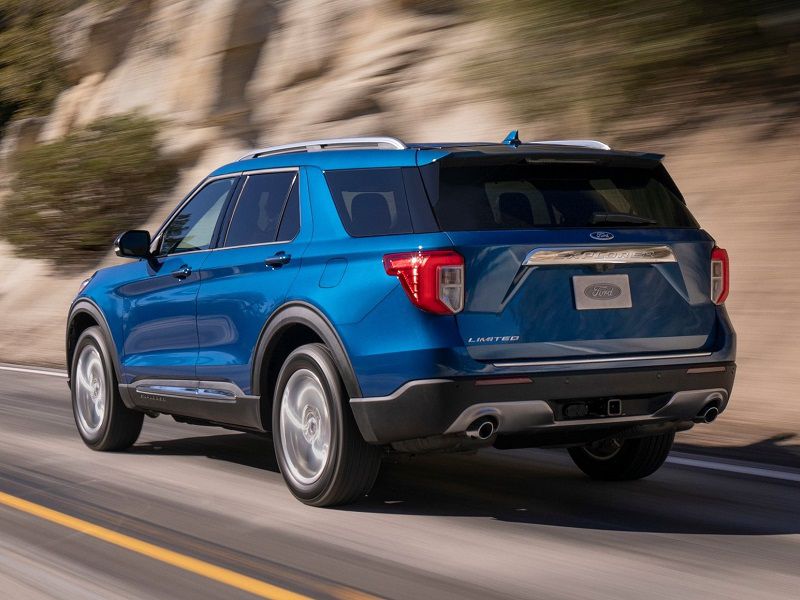
Photo by Ford
Value
Though the Ford Explorer’s base price is actually less than the Toyota Highlander’s, once you equip the popular XLT with appealing options, you’re spending more than $45,000. And you can’t touch the hybrid or twin-turbo V6 for less than $50,000.
Meanwhile, a nicely outfitted Highlander XLE runs more than a grand less than the Explorer XLT above. And it comes with free scheduled maintenance for the first two years and 25,000 miles of driving, as well as generous trial periods to the connected services plans. And at the price point where the most appealing versions of the Explorer start, you could be driving a loaded Highlander Platinum with AWD for less.
Toyota Highlander
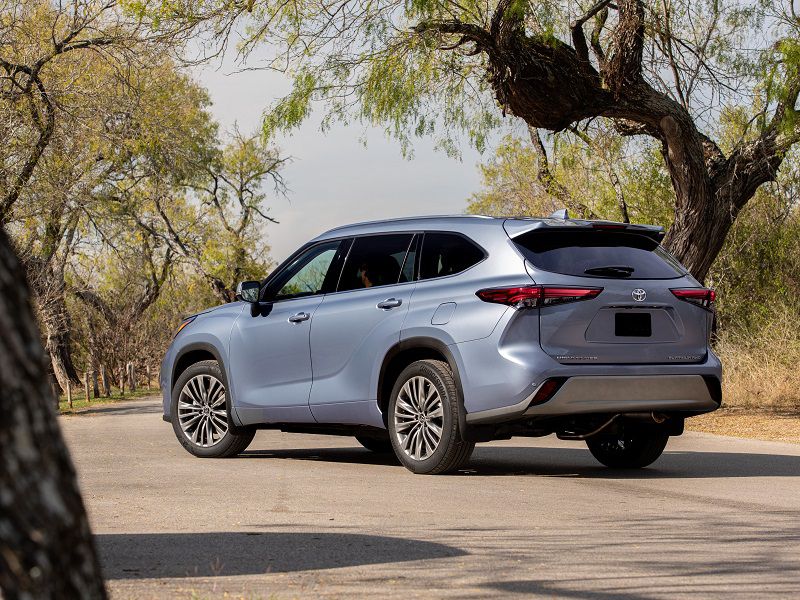
Photo by Toyota
The Verdict
Though expensive and flawed, the Ford Explorer gets many things right. It looks great (mostly), it drives great (mostly), and it’s technologically sophisticated in terms of infotainment, driving assistance, and collision avoidance systems. But it’s not quite as safe as the Toyota in crash tests.
Toyota delivers a compelling value equation in the Highlander, especially the frugal hybrid version. But this SUV’s redesign didn’t really set new standards aside from outstanding fuel economy. Rather, Toyota appears to be keeping up with the Kardashians, rather than leading them.
Ford Explorer
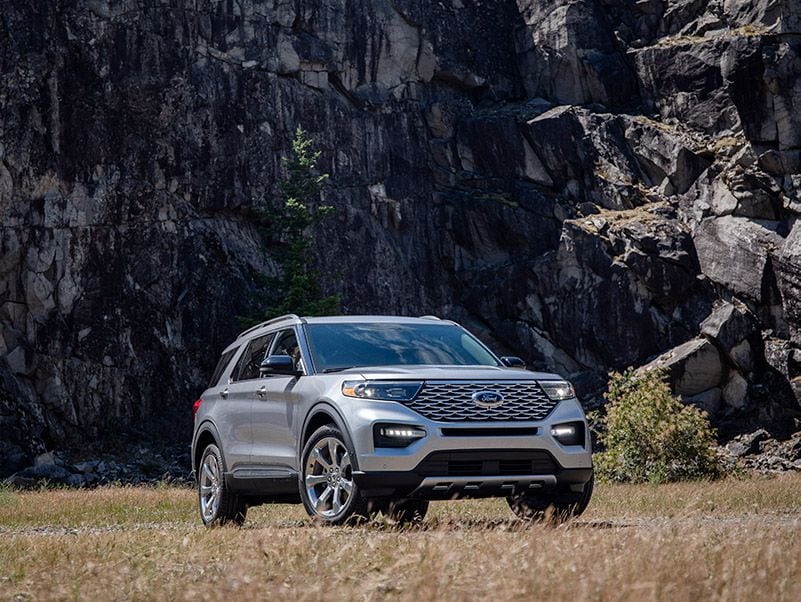
Photo by Ford